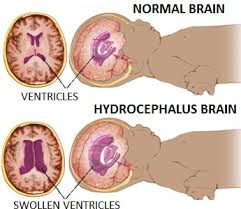3 Nursing Diagnosis and Interventions for Cystic Fibrosis
Cystic fibrosis (CF) is an inherited disease of the mucus glands and sweat . Cystic fibrosis (CF) affects mostly the lungs, pancreas, liver, intestines, sinuses, and sex organs.
Normally , mucus is watery / runny. Maintaining the layers of certain organs moist and prevents drying out or getting infected. But in CF, an abnormal gene causes mucus to become thick and sticky.
Mucus formed in the lungs and block the airways. It makes it easier for bacteria to grow and leads to repeated lung infections are serious. Over time, these infections can cause serious damage to the lungs.
Thick and sticky mucus can also block tubes, or ducts of the pancreas. As a result, the digestive enzymes produced by the pancreas is not able to reach the small intestine. These enzymes help break down food. Without them, the intestines can not absorb fats and proteins fully.
As a result:
- Nutrients leave the body unused, and can become malnourished.
- Stools become very large.
- May not get enough vitamins A, D, E, and K.
- May have gas in the intestines, the stomach is swollen, and pain or discomfort.
Nursing Care Plan for Cystic Fibrosis
Nursing Diagnosis I:
Ineffective airway clearance related to thick mucus secretions and effort and a lot of bad cough.
Goal: Not experiencing aspiration.
Outcomes: Shows an effective cough and increased air exchange in the lungs.
Interventions :
1. Auscultation of breath sounds. Note the example of wheezing breath sounds, crackles, rhonchi.
R /: Some degree of spasm of the bronchial obstruction with airway obstruction and may / not indicated the presence of abnormal breath sounds or crackles eg absence of breath sounds.
2. Perform physiotherapy to issue secret and give the patient a comfortable position, eg, elevation of the head of the bed, sitting on the back of the bed (position semi-Fowler / Fowler).
R /: head of bed elevation facilitate respiratory function using gravity.
3. Assist clients to dilute sputum, with the collaboration expectorant administration to improve airway clearance.
R /: Giving expectorants may help thin the secret, that secret is more easily removed.
4. Provide nebulizer with a solution and in accordance with the right tools.
R /: Nebulization can help spending viscous secretions.
5. Observations clients closely after aerosol therapy and chest physiotherapy to prevent aspiration due to many sputum suddenly become watery.
R /: To prevent aspiration.
6. Provide postural drainage (adjust the area where there is a buildup of mucus) as prescribed to reduce the viscosity of mucus.
R /: Postural drainage aids in the excretion of mucus is thick.
Nursing Diagnosis II :
Impaired gas exchange related to airway obstruction by nasal obstruction.
Goal: Maintaining adequate oxygenation or ventilation.
Outcomes:
The patient showed respiratory rate effectively.
Free of respiratory distress.
Arterial blood gas within the normal range.
Interventions :
1. Maintain a patent airway.
R /: Preventing complications of respiratory failure.
2. Position the patient to obtain maximum efficiency ventilators, such as a high Fowler's position or sitting, leaning forward.
R /: Position Fowler / semi-Fowler can facilitate respiratory function and can reduce airway collapse, dyspnoea, and breath work by using gravity.
3. Monitor vital signs, arterial blood gases (ABGs), and pulse oximetry to detect / prevent hypoxemia.
R /: increased PaCO2 indicates impending respiratory failure during asthmatic. Tachycardia, dysrhythmias, and changes in BP may indicate systemic hypoxemia effects on cardiac function.
4. Provide supplemental oxygen according to the provisions / requirements. Monitor patients closely for carbon dioxide narcosis due to oxygen is danger of oxygen therapy in patients with chronic lung disease.
R /: Occurrence / respiratory failure that would require effort dating lifesaving action. Supplemental oxygen administration can fix / prevent worsening hypoxia.
5. Motivation exercise appropriate physical condition of the patient.
R /: Physical exercise is often effective to clear accumulated lung secretions and to improve endurance exercise capacity before experiencing dyspnea
Nursing Diagnosis III
Ineffective breathing pattern related to tracheobronchial obstruction.
Goal:
Repairing or maintaining a normal breathing pattern.
Patients achieving lung function maximum.
Outcomes:
Patients showed an effective respiratory frequency with the frequency and depth within the normal range and lungs clear / clean.
Patients free of dyspnea, cyanosis, or other signs of respiratory distress.
Interventions :
1. Provide position Fowler or semi-Fowler.
R /: Position Fowler / semi-Fowler enables lung expansion and ease breathing. Changing position and ambulation improve air charging different lung segments which improves gas diffusion.
2. Teach deep breathing techniques, and or lip breathing or diaphragmatic breathing abdominal exercises when indicated and effective cough.
R /: to help spending sputum.
3. Observation vital signs (RR or frequency per minute).
R /: Tachycardia, dysrhythmias, and changes in BP may indicate the effect of systemic hypoxemia pad cardiac function.

Komentar
Posting Komentar